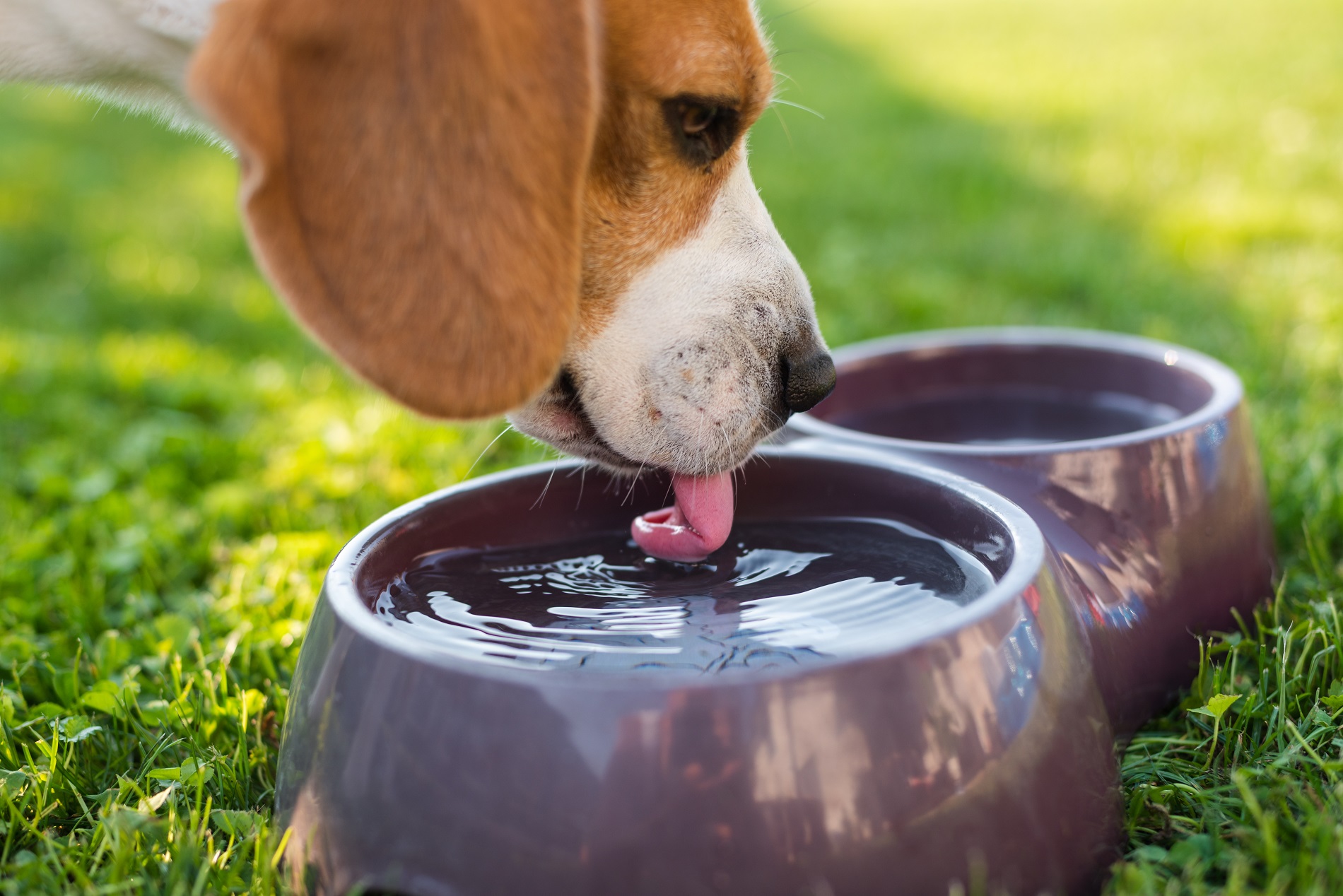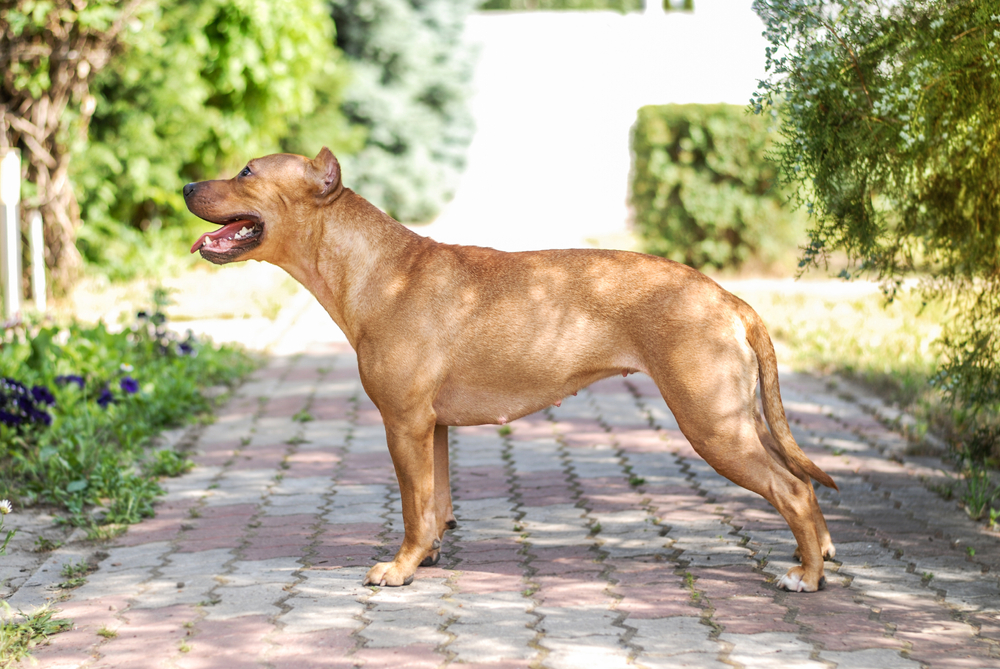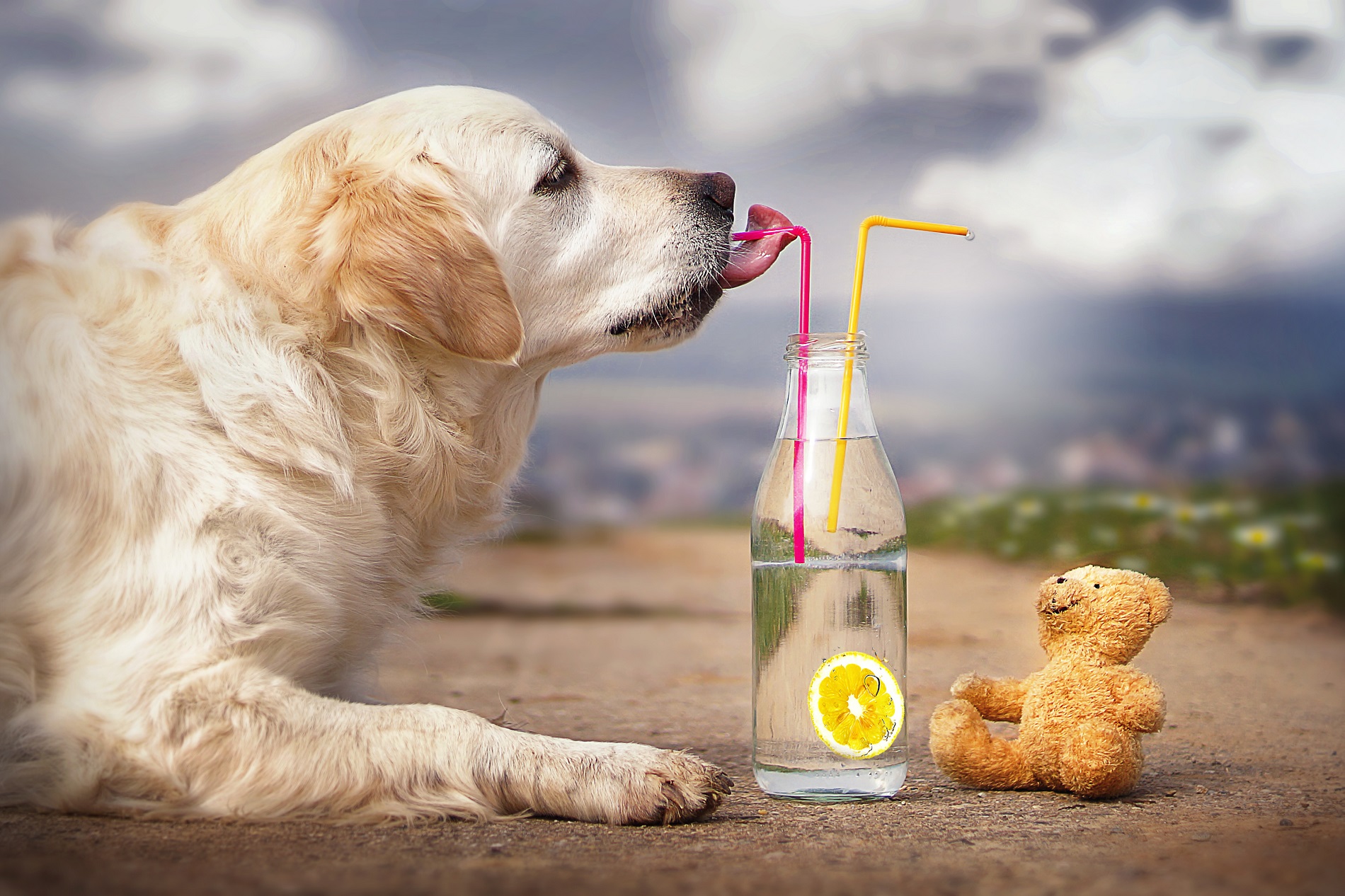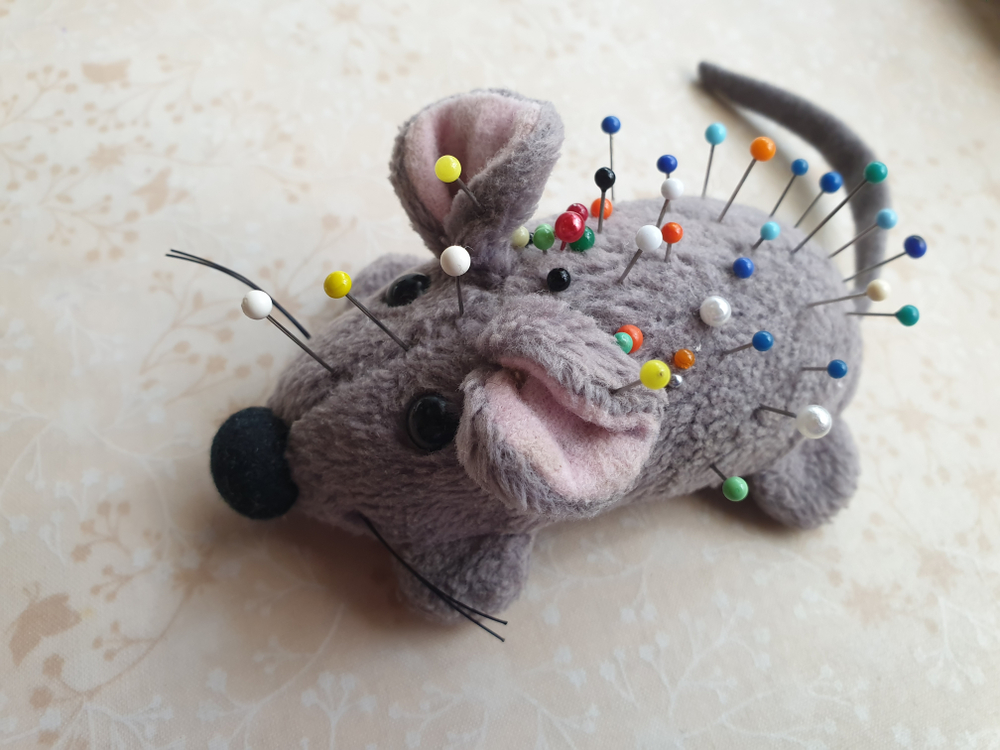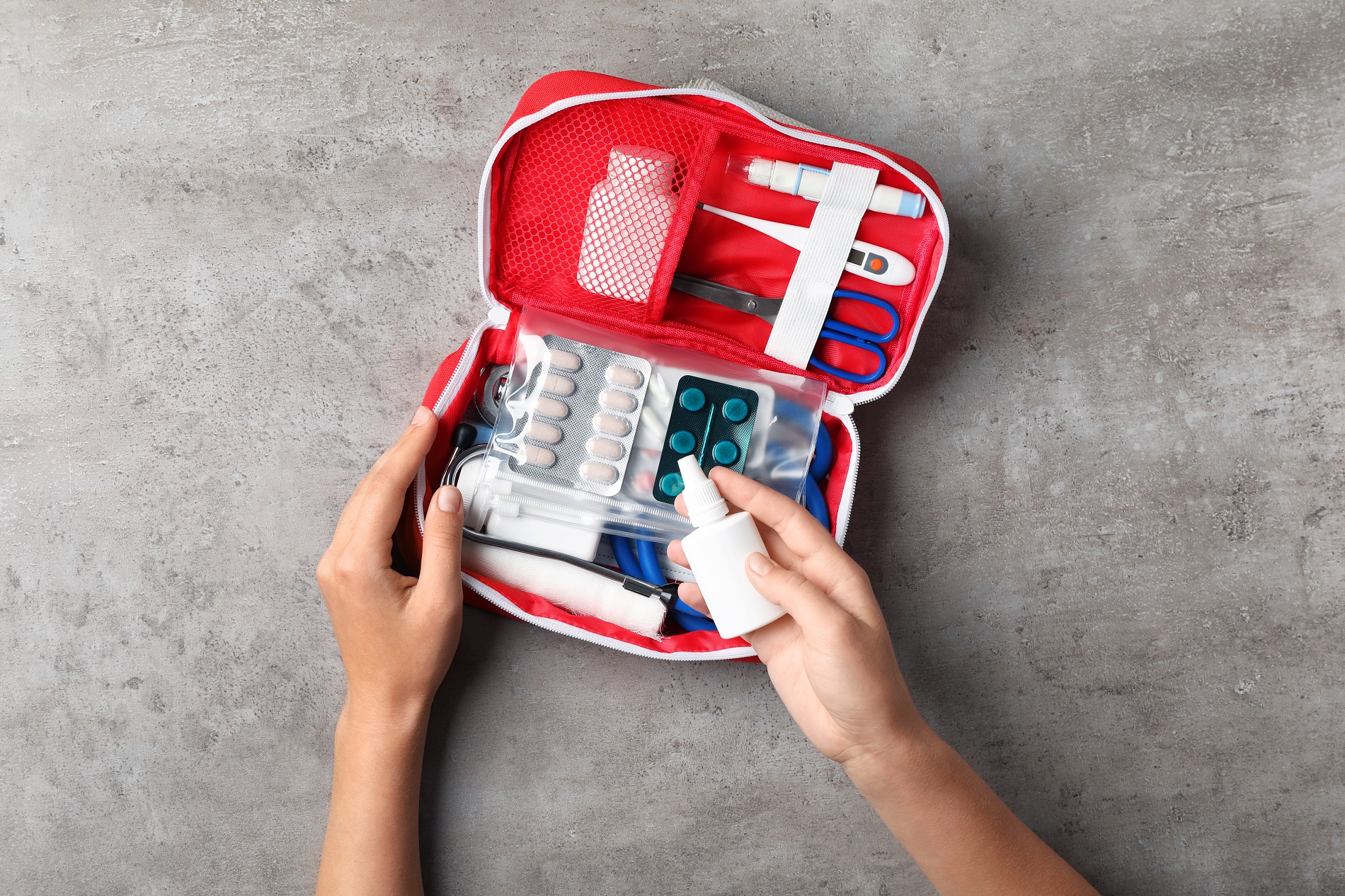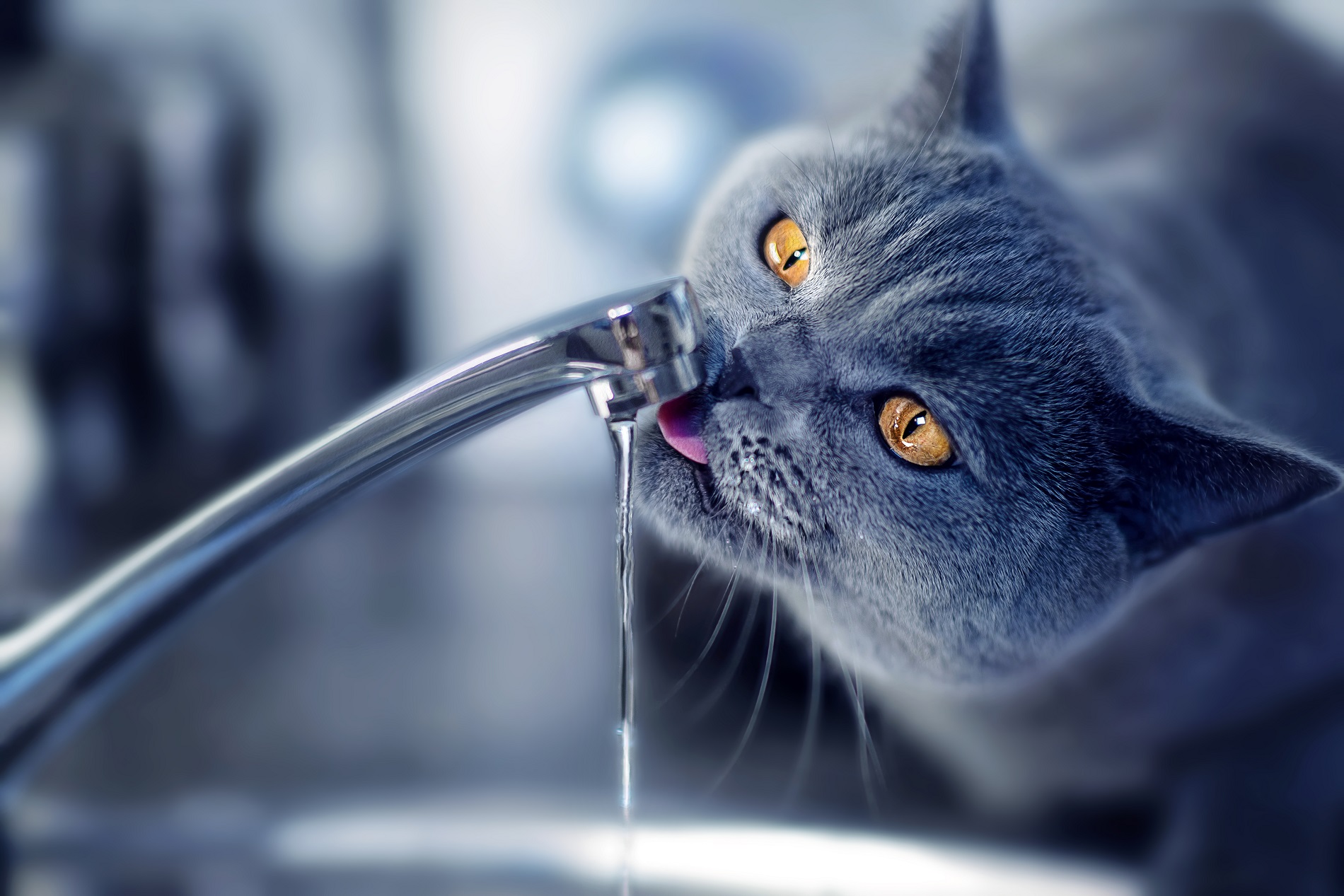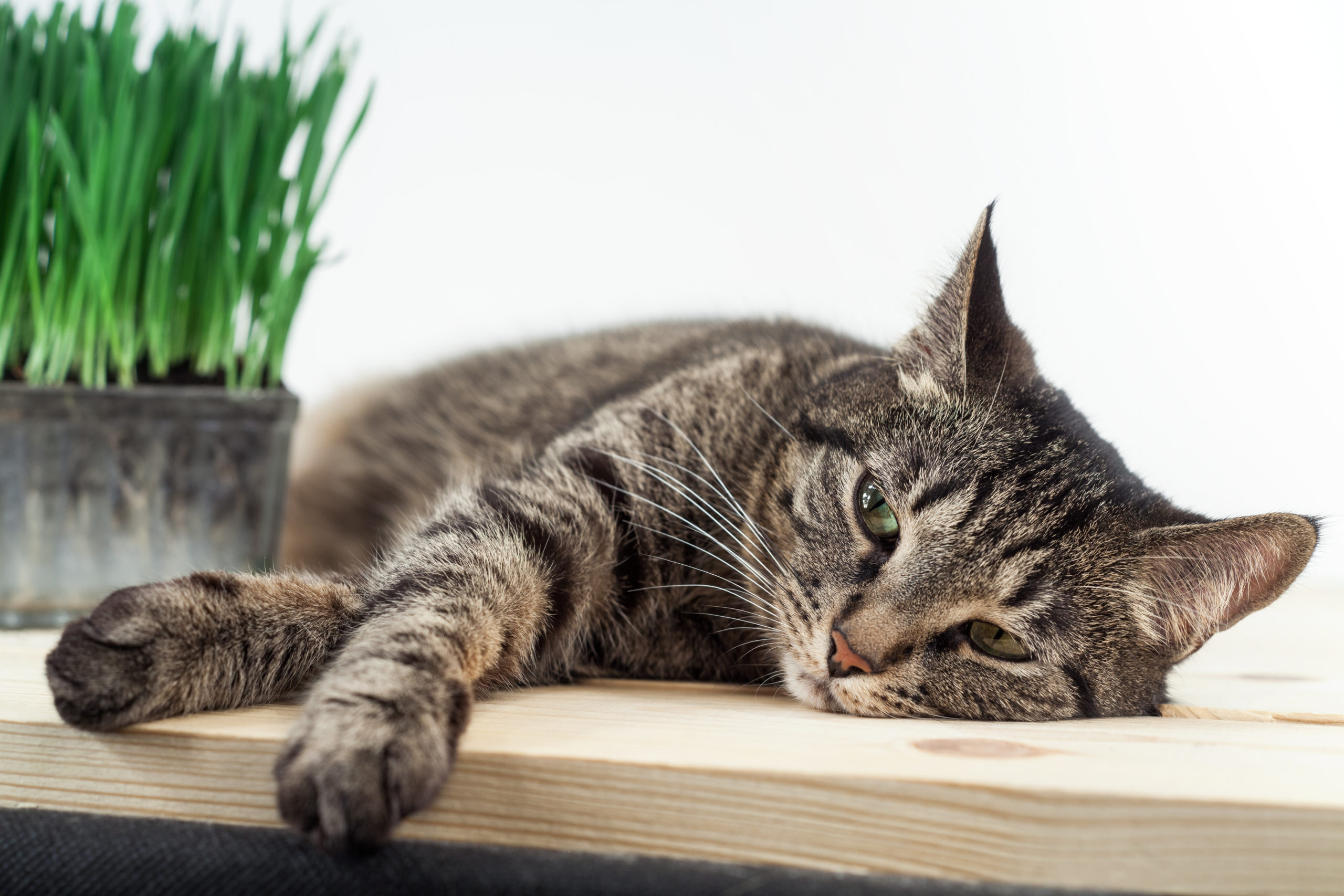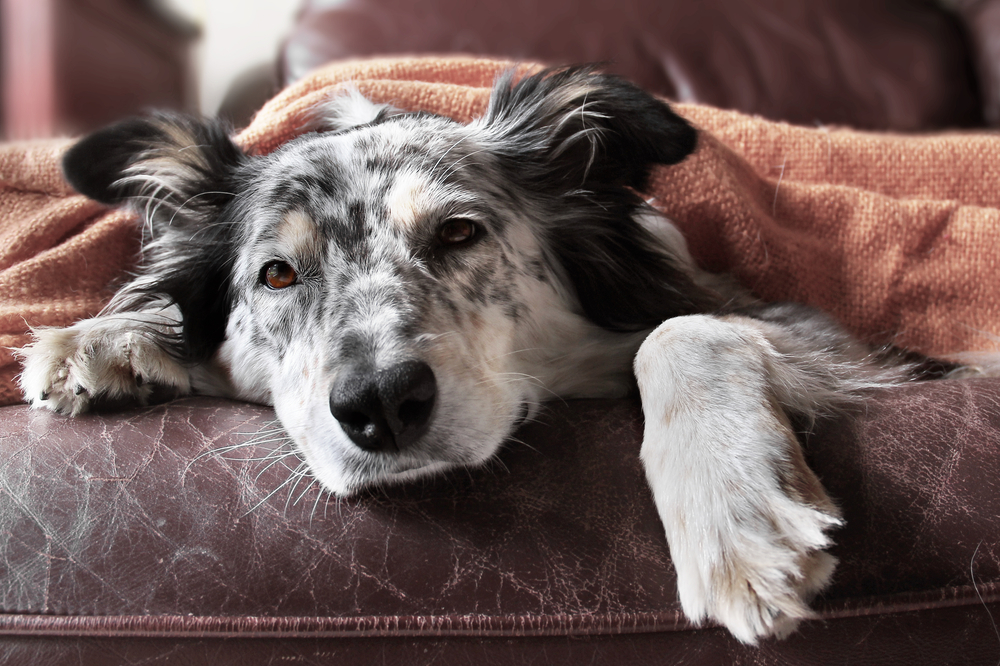Written by: Alexa Waltz
Signs of Diabetes in Dogs
Diabetes is a hot topic in human andanimal health. Most people have some understanding of this serious condition because a family member, friend, acquaintance, or maybe even a family pet is living with diabetes.
Are you suspecting that your pup may have diabetes, or just want to learn more about your dog’s recent diagnosis? Keep reading for a discussion of what diabetes in dogs is all about.
What Is Diabetes?
Diabetes is an endocrine disease that can affect dogs and involves a peculiar little organ called the pancreas. The pancreas lives in the abdomen and is tucked up near the stomach and intestines. A healthy pancreas is essential to digestion and glucose metabolism in the body.
You may recall that glucose is what the body uses for energy in all of its organs. Problems start to occur if the amount of glucose in the bloodstream is too high or too low. You may also hear glucose referred to as “blood sugar.”
Glucose is present in foods that we eat and is the predominant energy source for the brain, muscles, nerves, and all organs. Think of glucose as the best fuel that our cells use to perform ALL their functions! The process of how glucose is digested, stored, released, and absorbed is complicated, but understanding how glucose works is key to understanding diabetes.
How Does the Pancreas Regulate Glucose?
The pancreas plays an essential role in making sure glucose levels in the body are optimal and safe to keep everything working in tip-top shape. Let’s really get into the science of digestion and how important glucose is in the body.
During digestion, foods are broken down by the stomach and intestines into tiny molecules of glucose, fat, water, vitamins, minerals, and proteins. These molecules are tiny enough to be absorbed across the intestinal wall and into the bloodstream, where they circulate around the body, waiting to be used by cells or stored for later within the organs. The body needs and uses all types of different molecules to carry out the functions of our vital organs in order to sustain life.
After digesting a meal, you can imagine that the glucose level circulating around in the blood increases, looking to either be used by the body or stored away for later. The pancreas has specialized “beta cells” that detect glucose levels in the bloodstream. When the glucose level in the bloodstream is too high, the beta cells secrete a hormone called insulin.
What Does Insulin Do?
Insulin is released into the bloodstream and attaches to the surface of cells, allowing glucose to enter into the cell and be used as energy. Once inside, glucose powers all of the cellular processes. Brain cells have the highest energy demand in the body and NEED glucose to function, same with kidney cells, skin cells, and muscle cells … ALL of your body’s cells need glucose inside of them to function.
In short, insulin can be thought of as the key that opens a cell’s door to the essential energy source called glucose. Without insulin, glucose flows through the bloodstream, unused. Meanwhile, the cells are deprived of fuel and have to find alternative and less effective energy sources to keep carrying on with life itself.
How Diabetes Functions
Damage to the beta cells of the pancreas means that the ability to detect glucose levels and secrete insulin is impaired. Without enough insulin, glucose builds up in the bloodstream but all of the cells and organs in the body begin to starve. This is exactly what happens in patients with diabetes.
There may be plenty of glucose available in the bloodstream, but it is not accessible to the cells because it can’t get inside of them. In this state of glucose starvation, the body desperately looks for another energy source, which is fat.
Fat is much less efficient as a fuel for the body, and, unfortunately, byproducts of fat breakdown called “ketones” build up in the bloodstream. Ketones are very harmful in that they lower the blood pH, becoming more acidic.
Diabetes most often affects middle-aged to older dogs, and some breeds have a higher incidence of occurrence. The commonly affected breeds are Cocker Spaniels, Golden Retrievers, Dachshunds, Dobermans, German Shepherds, Pomeranians, Terriers, Keeshonds, Miniature Schnauzers, Samoyeds, Poodles, and Labrador Retrievers.
What Is Type I Diabetes?
The above process is referred to as “Insulin-dependent diabetes mellitus” (aka “Type I” or “juvenile diabetes” in humans) and is the most common type of diabetes in dogs. Scientists aren’t quite sure yet about what destroys the insulin-producing beta cells in the pancreas, but immune-mediated causes, recurrent pancreatitis, Cushing’s disease, and genetics are the likely culprits.
What Is Type II Diabetes?
Type II diabetes or “non-insulin-dependent diabetes” is also a chronic condition. It occurs either when a pancreas stops producing enough insulin or the body doesn’t respond well to insulin (insulin resistance) In the latter case, the liver, fat, and muscles struggle to pull the glucose from the blood. Dogs rarely get Type II diabetes; it’s seen more commonly in cats.
What Are the Symptoms of Diabetes in Dogs?
While we certainly would love diabetes to be eradicated for every person and animal, it sadly will continue to be diagnosed in humans and animals alike. Detection and diagnosis is the only way for treatment to occur, so it is important to learn the clinical signs of diabetes so treatment can be started and your pup is back to living their wag-filled, happy life.
Increased Thirst and Urination
Increased thirst and urination are by far the most common symptoms noticed by pet parents preceding their dog’s diagnosis of canine diabetes. Your dog can start to experience excessive thirst (polydipsia) that causes them to drain their water bowl daily in record time.
Look for extra water sources around the house, like the toilet or puddles outside. Urine accidents in the house may be noticed, too, simply due to the increased volume of urine present and the urgency to potty (polyuria). Pet parents also may note an increased appetite, weight loss, and decreased muscle mass alongside the thirst and urination.
This loss in muscle mass, or a more “bony” appearance, is because of the body breaking down fat stores in order to maintain energy delivery to the cells in the absence of glucose.
Why Do Dogs Drink and Pee So Much With Diabetes?
In a healthy dog, the kidneys ensure that there is no glucose present in the urine. With diabetes, there is such a high level of glucose in the blood (4-5 times normal!) that it overwhelms normal kidney functions, and some of that extra glucose ends up in the urine.
That glucose will also drag with it quite a bit of fluid due to the osmotic gradient (fluid will naturally follow that dissolved glucose into the urine). This great fluid loss is what creates that huge volume of urine and, at the same time, makes your dog so dehydrated that their brain is begging them to drink more and more and more to compensate!
What Is Diabetic Ketoacidosis?
Some dogs that experience extremely high blood glucose levels and an absence of insulin for an extended period may have a dangerous complication called Diabetic Ketoacidosis. This most commonly happens with patients who are pre-diagnosis, meaning they are not known to be diabetic yet. It can also happen in diabetic dogs that are not well-regulated with external insulin sources.
As mentioned earlier, that lack of insulin and the starvation of cells for energy will cause fat burning and the production of ketone bodies as a metabolic byproduct. Ketones are acidic, lower the pH of the blood, cause electrolyte imbalances, and disrupt cell functions — all very, very dangerous for overall body health.
These dogs will get very sick, stop eating and drinking, may vomit, may be panting or breathing abnormally deep, have low energy, and may have trouble walking and responding. It is extremely important that these dogs receive emergency care immediately, as this condition is life-threatening.
How Is Diabetes Diagnosed in Dogs?
Diabetes is usually a pretty straightforward diagnosis in dogs. A quick blood and urine test at your veterinary clinic should be able to indicate the presence of diabetes. The blood test will show hyperglycemia, aka increased blood glucose. Normal blood glucose levels for dogs are about 80-120 mg/dL, but diabetic dogs can be in the 500-600+ mg/dL range!
The urine test also will show glucosuria, aka glucose present in the urine. Normally, the kidney ensures there is no glucose in the urine, but when the circulating blood levels are above approximately 200 mg/dL, the kidneys will be overwhelmed, and glucose will spill into the urine as described above.
It is also very important to perform a urine culture looking for bacterial growth from a urine sample. Bladder infections are very common in diabetic dogs since glucose is present in their urine (and bacteria use glucose for energy, too!). Sometimes it is easy to miss a bladder infection on the urinalysis test alone since the urine is so dilute and the bacteria are spread so far apart, but the urine culture is a more sensitive test to check for the presence of bacteria.
Occasionally, the results of blood and urine testing are not convincing enough, and the numbers appear “borderline.” A special blood test called fructosamine can be sent to a lab to gather more info. This test is similar to the human “A1C” test and will indicate the average glucose levels present in the bloodstream over the previous few weeks. An elevated fructosamine can indicate the glucose has been elevated over a longer period of time.
Although diabetes is a serious diagnosis, your dog can still maintain their quality of life with careful monitoring and continued treatment.
How To Help Manage Your Dog’s Diabetes
Once diabetes has been confirmed in your pup, the adventure begins. Luckily, diabetes is very manageable in dogs, but it does take a devoted pet parent and close adherence to the plan you create with your vet. Luckily, we have many effective ways to manage and treat diabetes in dogs that result in your pup living their best life despite their diagnosis!
Insulin Treatment
The first step in treating your dog’s diabetes is to get their glucose under control with insulin therapy. Insulin helps to regulate blood sugar levels and keep your dog’s system from having too much sugar in the blood.
Under the guidance of your dog’s veterinarian, it may take several checkups to get the insulin levels just right, but your veterinarian will be focused on getting the perfect dosage for your dog.
Your veterinarian will also likely instruct you on methods of home monitoring, like a urine glucose test, to help monitor sugar and ketones while undergoing insulin treatment.
There are fast-acting and longer-acting insulin on the market, but dogs are typically prescribed a faster-acting insulin. Of course, this will be up to your veterinarian and which insulin type they believe will suit your dog the best. There are insulins marketed especially for pets, like Vetsulin and Humulin.
Usually, insulin is administered twice a day, every 12 hours, and after your dog eats. It is especially important to have a consistent routine for meal times and administering insulin. If meal times are drastically moved around, it can affect your dog’s blood sugar. It is also recommended to administer insulation after your dog eats because too much insulin can be harmful if it does not have any sugars to interact with.
An unbalanced or irregular diet could lead to hypoglycemia: dangerously low blood sugar levels. This is an emergency situation and requires an urgent visit to your DVM.
Insulin Administration
One of the key tasks that you’ll learn to help care for your diabetic dog is how to administer their insulin. Your veterinarian or the veterinary techs will teach you how to do this. It is totally normal to feel scared about doing this, but with practice and patience, you will become a pro at administering your dog’s daily insulin injections.
You’ll be instructed on how to fill the syringe with the proper insulin dose. Next, you’ll need to determine where the injection site will be. These injections are given just under the skin, and dogs typically respond well when the location is hear the shoulder blades or hip bones. Your veterinarian will instruct you to rotate the locations so that your dog doesn’t feel too sore from the same spot being used over and over again.
Once you have the location selected, you’ll pinch your dog’s skin and will insert the needle into the center of where your dog’s skin is folded. Gently push the plunger on the syringe down until all the insulin has been injected.
In the beginning, it may be smart to have a second pair of hands available to help. This helper can distract your dog with their favorite toy or a yummy piece of their favorite treat. Be sure to praise your dog after they receive their insulin injection. Pretty soon, it will become a regular part of your daily routine that you won’t think twice about.
Monitoring Diet
Along with insulin therapy, monitoring your dog’s diet is crucial to maintaining your dog’s glucose levels at a healthy threshold. What you give to your dog to eat as well as when you give it is important and must be carefully monitored.
When it comes to your dog’s diet, high fiber is recommended. Fiber helps your dog feel full but is lower in calories when compared to an equivalent amount of protein or carbohydrates. A low-fat diet is also recommended, as many dogs with diabetes may also experience health problems like heart issues or pancreatitis.
A low-fat diet is also helpful if your dog is overweight. Obesity can exacerbate diabetic symptoms, and slowly helping your dog lose some extra fluff can help you get a better handle on controlling their diabetes.
It can be tricky to ensure your dog receives the right amount of nutrients. Consult with your veterinarian or nutritionist to ensure that your pup gets all the necessary vitamins. There are several diabetic dog foods on the market, and one of them may be the perfect fit for your dog. Remember that treats need to be accounted for in your dog’s daily diet as well!
Consistent mealtimes are important, as your dog will need their insulin administered equal hours apart. Keeping a consistent schedule helps keep your dog’s glucose levels at a constant rate throughout the day.
Once you find the perfect food and insulin dosage for your dog, they will likely be back to feeling themselves again. Consistency is of utmost importance when it comes to a diabetic pet. It may be tempting to want to change their food, especially after eating the same thing day after day. Before making any changes, consult with your veterinarian to ensure that any changes are done slowly with careful monitoring.
Continued Monitoring with AskVet
Since diabetes is a lifelong condition, you’ll likely have plenty of questions about your dog’s diagnosis and continued treatment in between veterinarian visits. You may think to yourself that it would be so nice to have a resource where you can ask all your diabetes-related questions but not keep your veterinarian’s phone ringing off the hook. Enter AskVet!
For questions and further discussion on diabetes in dogs, your AskVet veterinarians are here to help! If you have any questions about your dog’s medical condition or are wondering whether your dog’s symptoms are an urgent issue, then all you have to do is AskVet. We are here 24/7 to help you and your dog!
Sources:
Update on insulin treatment for dogs and cats: insulin dosing pens and more | PMC
Diabetes in Pets | American Veterinary Medical Association
Diabetes | MU Veterinary Health Center
Written by:
Alexa Waltz, DVM
Dr. Waltz was raised near the beaches of Southern California but has spent her adult life living all over the beautiful United States while serving in the military and as a military spouse. She left California for the first time to pursue a career as a veterinarian at Louisiana State University School of Veterinary Medicine and graduated as a Doctor of Veterinary Medicine in 2006. She was accepted into the US Army Health Professionals Scholarship Program during vet school and upon graduation spent her military years as a veterinarian in San Diego working for the US Marine Corps and US Navy Military Working Dog programs as well as caring for pets of service members. After her military service, she became a civilian veterinarian and continued as a small animal general practitioner at clinics in California, Rhode Island, Colorado, and Maryland. Dr Waltz loves to see her “in person” patients just as much as communicating with and assisting pet parents virtually on AskVet. Dr Waltz is also a Mom to 3 humans, 2 guinea pigs, and 1 Australian Shepherd and in her spare time she loves traveling, adventures, exercising, and doing just about anything out in nature!

